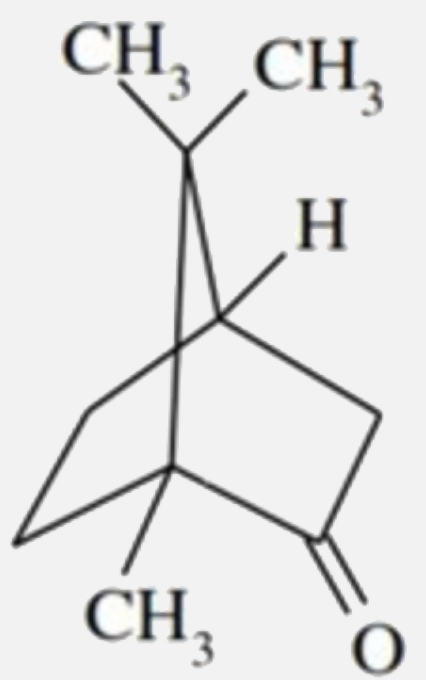Complete Solutions to CHEMISTRY of chapter NTA JEE MOCK TEST 50 of Class 12 book with complete answers and questions
| Class 12 | CHEMISTRY |
| Chapter | NTA JEE MOCK TEST 50 |
| NTA MOCK TEST | CHEMISTRY |
| Number Of Questions | 25 |
| Academic Year | 2023-24 |
4 mole of a mixture of Mohr's salt and `Fe_(2)(SO_(4))_(3)` requires 500mL of `1 M K_(2)Cr_(2)O_(7)` for complete oxidation in acidic medium. The mole % of the Mohr's salt in the mixture is:
View SolutionCalculate standard free energy change for the reaction `2Ag+2H^(+)rarrH_(2)+2Ag^(+)` Given : `E_(Ag^(+)//Ag)^(@)=+0.80V`
View SolutionElement X crystallizes in 12 co - ordination fcc lattice. On applyng high temperature it changes to bcc lattice. Find the ratio of the density of the crystal lattice before and and after applying high temperature
View SolutionRate of reaction (r ) is plotted against temperature (T) for an enzyme catalysed reaction. Which of the following is correct representation ?
View SolutionThe species in which the N-atom is in a state of sp hybridisation is
View SolutionConsider the following sequence of reactions
 `overset(H^(+)//Delta)rarr (X)overset(1.0_(3))underset(2.Zn//CH_(3)COOH)rarr (Y) overset(NaOH)underset(Delta)rarr`
`overset(H^(+)//Delta)rarr (X)overset(1.0_(3))underset(2.Zn//CH_(3)COOH)rarr (Y) overset(NaOH)underset(Delta)rarr` 
The intermediate products (X) and (Y) are respectively
View SolutionAn alkali is titrated against an acid with methyl orange as indicator, which of the following is a correct combination?
View SolutionIn Bohr 's model of hydrogen when an electron jumps from n=1 to n=3 how much energy will be absorbed
View SolutionWhich of the following compound will undergo tautomerism?
View SolutionWhich of the following lines correctly show the temperature dependence of equilibrium constant K, for an exothermic reaction?

View SolutionThe `K_(eq)` values in HCN addition to following aldehydes are in the order

View SolutionAn aqueous solution contains an unknown concentration of `Ba^(2+)`. When 50 mL of a 1 M solution of `Na_(2)SO_(4)` is added, `BaSO_(4 )`just begins to precipitate. The final volume is 500 mL. The solubility product of `BaSO_(4)` is `1xx10^(–10)`. What is the original concentration of `Ba^(2+)`?
View SolutionWhich of the following is incorrect?
View SolutionAt `518^(@)C` the rate of decomposition of a sample of gaseous acetaldehyde initially at a pressure of 363 Torr, was `1.00 Torr s^(–1)` when `5%` had reacted and `0.5 Torr s^(–1)` when 33% had reacted. The order of the reaction is
View SolutionThe basic character of the transition metal monoxide follows the order
View SolutionThe incorrect statement about the oxoacids, `HClO_(4)` and `HClO`, is
View SolutionTrichloroacetaldehyde, `C Cl_(3)CHO` reacts with chlorobenzene in presence of sulphuric acid and produces.
View SolutionWhen metal ‘M’ is treated with NaOH, a white gelatinous precipitate ‘X’ is obtained, which is soluble in excess of NaOH. Compound ‘X’ when heated strongly gives an oxide which is used in chromatography as an adsorbent. The metal ‘M’ is
View SolutionPhenol on treatment with `CO_(2)` in the presence of `NaOH` followed by acidification produces compound X as the major product. X on treatment with `(CH_(3)CO)_(2)O` in the presence of catalytic amount of `H_(2)SO_(4)` produces
View SolutionThe recommended concentration of fluoride ion in drinking water is up to 1 ppm as fluoride ion is required to make teeth enamel harder by converting `[3Ca_(3)(PO_(4))_(2).Ca(OH)_(2)]`
View Solution
how many `sp^(2)` carbon atoms are present in the final product?
View SolutionThe total number of stereoisomers that can exist for M is

View SolutionOne mole of `N_(2)O_(4)(g)` at 300 K is kept in a closed container under one atmosphere. It is heated to 600K when 20% by mass of `N_(2)O_(4)`(g) decomposes to `NO_(2)`(g). The resultant pressure is:
View SolutionAmong the following, the number of compounds that can react with `PCl_(5)` to give `POCl_(3)` is `O_(2)`,`CO_(2)`,`SO_(2)`,`H_(2)O`,`H_(2)SO_(4)`,`P_(4)O_(10)`.
View SolutionThe number of geometric isomers possible for the complex `[CoL_(2)Cl_(2)]^(-) ( L = H_(2) NCH_(2) CH_(2)O^(-))` is
View Solution
CHEMISTRY questions and complete solutions for chapter NTA JEE MOCK TEST 50 of NTA MOCK TESTS of Class 12